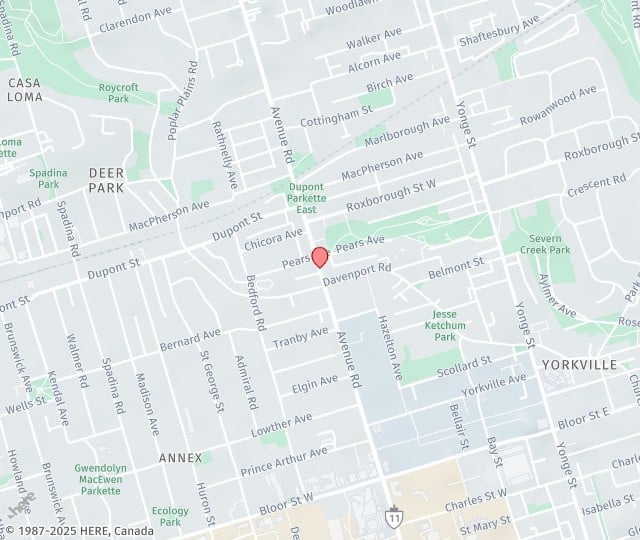As time passes, the natural aging process, environmental factors, and lifestyle choices can lead to sagging skin, deep wrinkles, and lost facial volume. If you want to restore a more youthful, refreshed appearance, you may want to consider facelift surgery (also known as rhytidectomy).
Dr. Dimitrios Motakis, a Board-Certified Plastic Surgeon from the Royal College of Physicians and Surgeons of Canada (FRCSC), specializes in advanced facelift techniques to tighten sagging skin, smooth deep folds, and redefine facial contours for natural-looking results.

Are you considering facial surgery in Toronto? Trust Dr. Motakis to help you achieve a rejuvenated, refreshed look while maintaining your natural beauty.
What Is a Facelift?
A facelift helps reduce the effects of facial aging, giving patients a more youthful, refreshed and rested appearance. It repositions the cheeks to their younger position and restores the sharp contours of the jawline and the neck.
If you are unhappy with how weathered and tired you look around your lower face and neck, a rhytidectomy procedure may be right for you.
What Is a Mini Facelift?
In some cases, patients present with facial aging, but their neck still appears youthful. In such cases, a mini-facelift (S-lift, short-scar facelift) is usually performed. This shorter surgical procedure uses smaller incisions and has a relatively quicker recovery time.
Is It Possible to Have an Isolated Neck Lift?

Some patients present with signs of aging on their neck alone and are less preoccupied with the aging of the rest of their face. In such cases, Dr. Motakis may recommend an isolated neck lift procedure can be used.
Neck lift surgery requires shorter incisions that are mostly hidden behind the ears. It rejuvenates and defines your appearance without overstretching your skin.
Benefits of Combining a Lower Face and Neck Lift
An isolated neck lift can address some concerns, such as excess fat and skin under the chin and ‘cord-like’ vertical bands, also known as platysma bands, that create a “turkey neck.” However, a combined lower face and neck lift will be more effective for those seeking a significantly sharper jawline. During the consultation, Dr. Motakis will discuss all options for neck rejuvenation with you and help you decide on the best procedure.
Ideal Rhytidectomy Candidates
The ideal candidate for a rhytidectomy procedure is a man or a woman who has facial and neck descent and does not want to look weathered and tired all the time.
Frequently, rhytidectomy is performed on patients who are past their forties. However, it can also be successfully performed on healthy patients in their seventies and eighties.

Deep Plane Facelift vs. SMAS
A deep plane facelift and an SMAS facelift both target facial aging but differ in technique and depth.
A SMAS facelift (Superficial Musculoaponeurotic System) focuses on the layer of tissue beneath the skin but above the deeper facial muscles. Surgeons lift and reposition the SMAS layer to restore youthful contours while keeping the skin and deeper structures separate. This approach is effective for moderate sagging and provides natural-looking results with relatively less downtime.
On the other hand, a deep plane facelift goes deeper, releasing and repositioning the entire SMAS layer along with the underlying muscles and ligaments. This allows for more comprehensive facial rejuvenation, particularly in the midface and jawline, and avoids the overly pulled appearance. Since it works at a deeper structural level, the results tend to be longer-lasting.
The focus of the SMAS facelift is the lower third of the face. Hence, very little improvement is seen in the mid-face. Conversely, the deep plane facelift leads to a striking jawline definition as well as restoration of the mid-face cheek volume.
While both techniques are effective, a deep plane facelift is often recommended for more advanced aging concerns, whereas an SMAS facelift suits those with moderate laxity.
What Happens During a Facelift Procedure?
Dr. Motakis uses various techniques to perform facelifts. He strives to use the shortest incisions possible to achieve the desired result. However, when necessary, he uses the incisions of a full-face lift to achieve the optimal outcome.
During all facelift procedures, an incision is made along the anterior contours of the ears, which is extended behind the ear and along the hairline in variable degrees. If the neck is very droopy, an incision under the chin may also be necessary to achieve a sharp jawline.
Once the skin on the sides of the cheeks and neck is lifted to access the underlying tissue (SMAS), it is repositioned superiorly and posteriorly to where it used to lie earlier in life. The method of repositioning varies from patient to patient. It may involve suturing it at a higher place (SMAS plication), removing a strip of tissue and sewing the tissues tighter together (SMASectomy), or lifting the SMAS and cheek off its underlying structures and repositioning it at a higher place (SMAS flap, deep plane facelift, composite facelift). Once the tissue is repositioned, excess skin and fat are delicately removed.
If the neck displays severe bands, excess skin, and/or fat, an additional access point is necessary. A one-inch incision is made in the crease under the chin. The structures directly under the jaw are accessed and tightened, allowing for a sharper neck contour. Lastly, particular attention is paid to the incisions using internal dissolving sutures so that no stitch marks are left behind, no painful suture removal is required, and the incisions become imperceptible.
Dr. Motakis performs facelifts under general anesthesia or sedation. These surgeries typically require a one-night stay at our fully accredited, on-site surgical facility on Avenue Road.
Facelift Before And After

Rhytidectomy Recovery
On average, it takes 1-3 weeks to recover from a lower face and neck lift. Most patients take 1-2 weeks off work to focus on healing.
Initially, you should expect a few days of swelling and bruising with minimal discomfort. These symptoms can be treated with moderate analgesics.
You will likely be able to resume light activities 5-7 days after your surgery. However, it is recommended that you resume any significant physical activity only after the second week.
The fine incisions will fade and become imperceptible over the next few months. Dr. Motakis will instruct you on caring for your incisions while you recover from surgery.
Dr. Motakis may recommend various lasers and other treatments to expedite incision fading during the early postoperative period.
Facelift Before And After

Facelift Surgery Timeline: When to Schedule Around Life Events
Planning your facelift around major life events requires thoughtful timing to ensure the best aesthetic outcome and a smooth recovery. Whether you are preparing for a wedding, family reunion, or milestone celebration, it’s best to schedule your procedure three to six months before the event. This timeframe allows your body to heal fully, swelling to resolve, and results to appear natural and refined.

In the first few weeks after surgery, bruising and tightness are common as your tissues adjust. By the three-month mark, most patients notice significant improvement in contour and skin tone, with minimal signs of surgery. Scheduling well in advance also provides flexibility for any additional treatments such as fillers, skin resurfacing, or professional skincare to enhance your results.
Working closely with your surgeon ensures you can plan your rejuvenation journey around your lifestyle without feeling rushed. By giving yourself adequate time, you’ll look refreshed and confident when your special day arrives.
Facelift for Men: Unique Goals and Techniques
Facelifts for men focus on creating a rejuvenated yet distinctly masculine look. The goal is to restore firmness and definition without altering the natural character of the face. For men, maintaining a strong jawline and balanced facial proportions is essential to achieving a natural result.
Dr. Motakis approaches male facial surgery with techniques tailored to men’s facial hair patterns, and bone structure. Incisions are often placed strategically around the beard line or near the hairline to minimize visible scarring while preserving natural contours.
The goal is subtle rejuvenation—lifting and tightening where needed while avoiding an overdone or “pulled” appearance. By enhancing structural definition and refining skin laxity, men can achieve a more youthful, confident look that remains true to their identity.
FAQs
Does a Deep Plane Facelift Have a Longer Recovery Period?
The term “deep plane lift” can be misleading. Many patients believe that a deep plane lift is more invasive than other facelift methods and that more trauma to facial tissues must occur. This is not true. Because it addresses foundational tissues without separating them from superficial muscle, the deep plane facelift is far less traumatic than patients imagine.
The deep plane technique also does not sever blood vessels beneath the skin, preserving the natural blood supply and promoting faster healing.
How Long Do the Results of a Facelift Last?
The results of a facelift are long-lasting – 10 to 15 years on average. However, this timeline can vary depending on factors like skin quality, genetics, lifestyle, and ongoing skincare.
Remember that a facelift can turn back the clock, but it does not stop the natural aging process. Over time, some sagging and wrinkles may reappear. That said, patients will continue to look younger than if they had never had the procedure.
How Can I Maintain My Facelift Results for as Long as Possible?
Proper skin care, healthy lifestyle choices, and non-surgical treatments can preserve your facelift results for years.
- Use Sun Protection: UV exposure accelerates skin aging and can break down collagen. Use a broad-spectrum SPF 30+ sunscreen daily, even on cloudy days.
- Stick to High-Quality Skincare Products: Hydrate and moisturize to keep skin plump and supple. Use products with retinol, vitamin C, and hyaluronic acid to support collagen and improve skin texture.
- Maintain a Healthy Lifestyle: Drink plenty of water and eat a nutrient-rich diet. Avoid smoking and excessive alcohol consumption, as they can cause skin laxity and premature aging.
- Consider Non-Surgical Touch-Ups: Neuromodulators can soften dynamic wrinkles and prevent new ones. Dermal fillers can restore lost volume in areas not treated by the facelift.
- Maintain a Stable Weight: Significant weight fluctuations can cause skin to stretch or sag. Regular exercise and a balanced diet help keep skin firm and toned.
- Follow Dr. Motakis’s Aftercare Instructions: Attend all post-op follow-ups. This allows Dr. Motakis to assess healing and identify potential issues sooner.
Are Deep Plane Facelift Scars Visible?
Incisions from a deep plane facelift typically heal with little to no visible scars. This is because incisions are not under any tension once they are closed.
Are There Any Alternatives To Facelift Surgery?
Our practice offers many noninvasive treatments to help slow down and restore some signs of facial aging. Although they don’t provide the dramatic improvement one gets with a facelift, they offer visible improvements and immediate gratification without as much downtime.
Significant enhancement of the face and neck can be achieved using neuromodulators, injectable fillers, and platelet-rich plasma (PRP) injections. Various lasers, such as the SmartSkin© fractional CO2 laser, Forma and Fractora© RF, PicoSure© and Intense Pulsed Light (IPL), can also help brighten one’s complexion and minimize fine lines and wrinkles.
Vitamin and hyaluronic acid skin boosters, oxygen therapy, and chemical peels can help restore the skin's glow and youthful, hydrated appearance. High-grade targeted medical skincare (such as ZO©, SkinMedica©, Neocutis©) can also help you maintain these results daily.
Many of these treatments are also ideal for maintaining and enhancing the surgical result after a rhytidectomy procedure. During the consultation, Dr. Motakis will guide you to the right treatment plan to achieve and maintain the most optimal result.
Can Rhytidectomy Be Combined With Other Procedures?
Many of Dr. Motakis’ patients combine their face and neck lift procedures with other cosmetic procedures offered at our clinic. These procedures frequently include:
What Are the Risks of Lower Face and Neck Lift Surgery?
Dr. Motakis makes every effort to ensure patient safety during facelift and neck lift surgeries.
As with any surgery, swelling and bruising around the face and neck can’t always be avoided. However, they generally resolve over the first few days or weeks. Scarring is invariably imperceptible but may take a few weeks or months to fade.
In rare cases, bleeding, infection, changes in skin sensation, or a reaction to medication or anesthetic may occur. Injury to important structures such as nerves is extremely rare and usually resolves over time.
The list of all possible risks will be discussed in detail during your consult and pre-operative appointment with Dr. Motakis and his team.
How Soon Can I Wear Makeup After a Facelift?
Most patients can start wearing makeup around 10 to 14 days post-surgery. At this point, most swelling and bruising has subsided. Here are some tips for applying makeup after a facelift:
- Wait for Incisions to Heal: Do not apply makeup over incisions until they are fully closed (usually 2 to 3 weeks). Using makeup too soon can increase the risk of infection or irritation.
- Use Clean Brushes and Sponges: Bacteria can lead to infections. Sanitize all application tools before use.
- Opt for Mineral or Hypoallergenic Makeup: Choose gentle, non-comedogenic products to prevent irritation.
- Be Gentle When Removing Makeup: Avoid scrubbing or pulling on the skin. Use a mild cleanser and pat dry instead.
Always consult Dr. Motakis for personalized guidelines, as individual healing times can vary.
How long before a major event should I plan my facelift?
You should plan your facelift at least three to six months before a major event. This gives your body enough time to heal and ensures your final results appear natural and fully refined.
Choosing the Right Facelift Technique for You
The best facelift technique depends on your anatomy, degree of skin laxity, and desired outcome. Your surgeon will assess whether a full, mini, or mid-facelift is most appropriate to deliver balanced and long-lasting results.
Combining Surgical and Non-Surgical Treatments for Comprehensive Rejuvenation
A facelift can be complemented with non-surgical treatments like dermal fillers, neuromodulators, or laser resurfacing. Combining these enhances skin quality, refines facial contours, and prolongs surgical results.
Long-Term Maintenance and Aging Gracefully After Surgery
After your facelift, maintaining your results requires a combination of thoughtful skincare and healthy lifestyle choices. You should follow a consistent skincare routine that includes daily cleansing, moisturizing, and the use of medical-grade products tailored to your skin type. Regular use of broad-spectrum sunscreen is essential to protect your skin from UV damage, which can accelerate aging and diminish surgical results. Staying hydrated, eating a nutrient-rich diet, and getting adequate sleep all contribute to long-term skin health and elasticity. Periodic non-surgical treatments, such as injectables, chemical peels, or laser resurfacing, can help refine your appearance and maintain collagen production over time. Avoiding smoking and minimizing alcohol consumption also play a key role in preserving your results.
By combining these habits with regular follow-up visits to your surgeon, you can support lasting rejuvenation, allowing you to age gracefully while enjoying the natural, refreshed look achieved through your facelift.
Why Choose Dr. Dimitrios Motakis?
Dr. Dimitrios Motakis is an esteemed plastic surgeon with extensive expertise in facial rejuvenation. He has received numerous honours, including the Medical Research Council of Canada (MRC) Scholarship. He has also authored several book chapters on facial aesthetics and regularly lectures to professionals and the public.
Dr. Motakis’s dedicated team includes a registered nurse and medical skin care specialist. They are committed to providing a comprehensive, patient-centered approach and exceptional, natural-looking results.
Schedule a Consultation
Are you interested in learning more about facelift surgery? Do you want to see if you are a candidate? If so, please contact Dr. Motakis’s office today at (416) 925-5775. He and his staff are here to answer your questions and help you make an informed decision.


